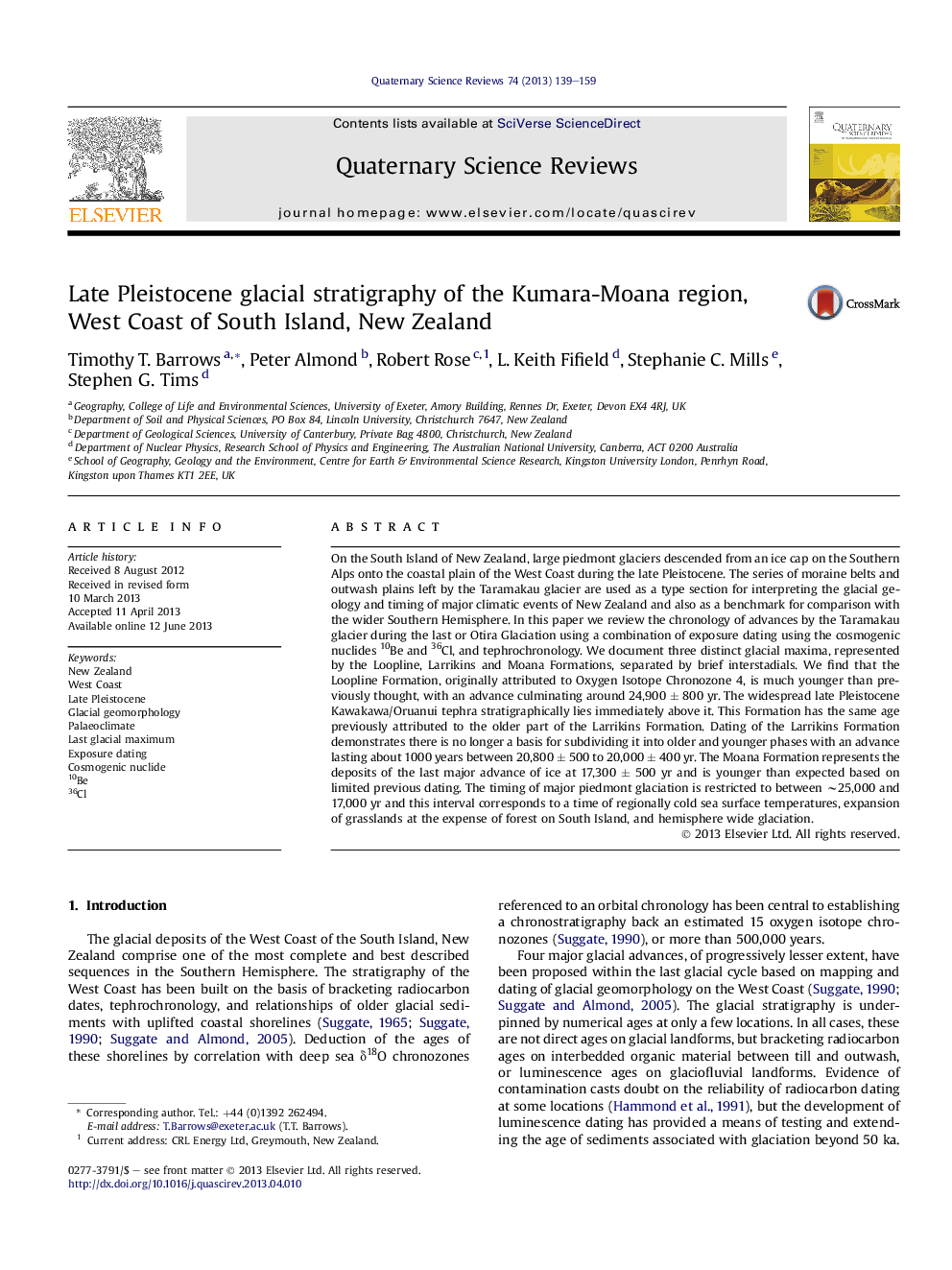| Article ID | Journal | Published Year | Pages | File Type |
|---|---|---|---|---|
| 4736242 | Quaternary Science Reviews | 2013 | 21 Pages |
•A revision of the glacial chronostratigraphy of the West Coast of New Zealand.•Three major advances of ice are exposure dated to the late Pleistocene.•Glacial maxima occurred at 24,900 ± 800 yr, 20,800 ± 500 to 20,000 ± 400 yr and 17,300 ± 500 yr.•No evidence is found for ice during the early Otira glaciation at ∼64,000 yr.
On the South Island of New Zealand, large piedmont glaciers descended from an ice cap on the Southern Alps onto the coastal plain of the West Coast during the late Pleistocene. The series of moraine belts and outwash plains left by the Taramakau glacier are used as a type section for interpreting the glacial geology and timing of major climatic events of New Zealand and also as a benchmark for comparison with the wider Southern Hemisphere. In this paper we review the chronology of advances by the Taramakau glacier during the last or Otira Glaciation using a combination of exposure dating using the cosmogenic nuclides 10Be and 36Cl, and tephrochronology. We document three distinct glacial maxima, represented by the Loopline, Larrikins and Moana Formations, separated by brief interstadials. We find that the Loopline Formation, originally attributed to Oxygen Isotope Chronozone 4, is much younger than previously thought, with an advance culminating around 24,900 ± 800 yr. The widespread late Pleistocene Kawakawa/Oruanui tephra stratigraphically lies immediately above it. This Formation has the same age previously attributed to the older part of the Larrikins Formation. Dating of the Larrikins Formation demonstrates there is no longer a basis for subdividing it into older and younger phases with an advance lasting about 1000 years between 20,800 ± 500 to 20,000 ± 400 yr. The Moana Formation represents the deposits of the last major advance of ice at 17,300 ± 500 yr and is younger than expected based on limited previous dating. The timing of major piedmont glaciation is restricted to between ∼25,000 and 17,000 yr and this interval corresponds to a time of regionally cold sea surface temperatures, expansion of grasslands at the expense of forest on South Island, and hemisphere wide glaciation.
